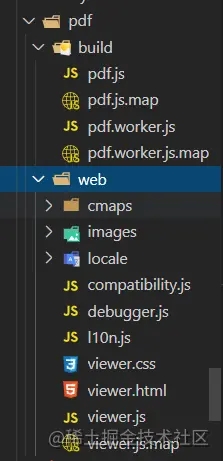前言
Pinia是尤雨溪强烈推荐的一款Vue状态管理工具,也被认为是下一代Vuex的替代产品。
优点
- 去除了mutations,只有 state,getters和actions,其中actions支持了同步和异步操作
- 不会像Vuex那样有模块嵌套,Pinia只有store的概念,store之间可以相互使用,互不影响,达到模块扁平化的效果
- 更好地支持ts
- 更好地支持Vue2/Vue3
- 逻辑更加清晰,开发起来更加简单
安装
npm i pinia
创建并挂载
1.在src目录下新建store目录并在其下面创建index.js文件,代码如下:
import { createPinia } from 'pinia'
const store = createPinia()
export default store
2.在main.js中引入store并挂载,代码如下:
import { createApp } from 'vue'
import App from './App.vue'
import store from './store/index'
createApp(App)
.use(store)
.mount('#app')
创建store
在src/store文件夹下创建一个js文件,命名按照需求即可,我这边定义为main.js,代码如下:
import { defineStore } from 'pinia'
export const mainStore = defineStore('main', {
state: () => {
return {
msg: 'hello',
count: 1
}
},
actions: {},
getters: {}
})
其中defineStore的第一个参数为该store的名称,第二个参数为一个对象,包含了该store的state,getters和actions,state改为了函数形式,目的应该是像Vue2 options API中的data类似,避免多个store中定义的属性相互受到影响。
使用store
此处使用Vue3的SFC语法,主要是Pinia更适合Vue3这种组合式API风格,方便演示
回显与修改state
<script lang="ts" setup>
import { mainStore } from '../store/main'
import { storeToRefs } from 'pinia'
const store = mainStore()
const { count } = storeToRefs(store)
// 单条数据直接修改
const handleAddCount = () => {
store.count++
}
</script>
<template>
<div>
<p>{{ store.msg }}</p>
<p>{{ count }}</p>
<button @click="handleAddCount">+</button>
</div>
</template>
- 使用方法与Vuex基本类似,要使用哪个store,就直接进行引入,非常方便,没那么多层级引用
- 其中,我们使用了Pinia中的storeToRefs方法,此方法能够直接解构出该store的state中的某个值,并且是响应式的;如果我们直接从state上解构,那么解构出的值就不是响应式的了。
- 如果我们要修改state中的值,不能直接去修改解构出的值,得去修改state上对应的属性
使用$patch对多条数据直接修改
使用$patch的方式对数据进行修改,可以加快修改速度,性能更好。$patch方法可以接受两种类型的参数,对象型和回调函数型。
$patch + 对象
$patch + 函数 注:使用回调函数型时,回调接收一个state参数,state指代的就是对应store中的state
使用方式如下:
<script lang="ts" setup>
import { mainStore } from '../store/main'
import { storeToRefs } from 'pinia'
const store = mainStore()
const { count } = storeToRefs(store)
// 使用$patch + 对象
const updateWithObj = () => {
store.$patch({
msg: store.msg === 'hello' ? 'hello world' : 'hello',
count: store.count + 2
})
}
// 使用$patch + 回调
const updateWithFun = () => {
store.$patch((state) => {
state.msg = state.msg === 'hello' ? 'hello world' : 'hello'
state.count = state.count + 3
})
}
</script>
<template>
<div>
<p>{{ store.msg }}</p>
<p>{{ count }}</p>
<button @click="updateWithObj">$patch+对象</button>
<button @click="updateWithFun">$patch+回调</button>
</div>
</template>
使用actions
1.在src/store/main.js的actions对象中,添加一个方法,代码如下:
import { defineStore } from 'pinia'
export const mainStore = defineStore('main', {
state: () => {
return {
msg: 'hello',
count: 1
}
},
actions: {
changeState() {
this.count++
this.msg = this.msg === 'hello' ? 'hello world' : 'hello'
}
},
getters: {}
})
2.使用方式为:store.方法名,代码如下:
<script lang="ts" setup>
import { mainStore } from '../store/main'
import { storeToRefs } from 'pinia'
const store = mainStore()
const { count } = storeToRefs(store)
// 使用action修改数据
const onActionClick = () => {
store.changeState()
}
</script>
<template>
<div>
<p>{{ store.msg }}</p>
<p>{{ count }}</p>
<button @click="onActionClick">使用action</button>
</div>
</template>
使用getters
Pinia中的getter和Vue中的计算属性类似,在获取state之前会进行处理,具有缓存性,如果值没有改变,即使多次调用,实际上也只会调用一次。
1.在src/store/main.js的getters对象中进行添加,代码如下:
import { defineStore } from 'pinia'
export const mainStore = defineStore('main', {
state: () => {
return {
msg: 'hello',
count: 1
}
},
getters: {
getState(state) {
console.log('getState被调用了');
// getter 中不仅可以传递state直接改变数据,也可以使用this来改变数据
return `${state.msg} + ${this.count}`
}
}
})
2.使用方式如下:
<script lang="ts" setup>
import { mainStore } from '../store/main'
const store = mainStore()
</script>
<template>
<div>
<p>使用getter获取数据:{{ store.getState }}</p>
<p>使用getter获取数据:{{ store.getState }}</p>
<p>使用getter获取数据:{{ store.getState }}</p>
</div>
</template>
我们可以看到,即使执行了三遍一样的代码,但最终还是只调用了一次。
多个store相互调用
在Pinia中,可以在一个store中import引入另外一个store,然后通过调用引入的store方法的形式,获取引入的store的状态。
1.在src/store目录下,新建一个文件.js,代码如下:
import { defineStore } from 'pinia'
export const userStore = defineStore('user', {
state: () => {
return {
name: '吴同学'
}
}
})
2.在需要用到的store中进行引入,并通过getters的方式获取,代码如下:
import { defineStore } from 'pinia'
import { userStore } from './user'
export const mainStore = defineStore('main', {
getters: {
getUserState() {
return userStore().name
}
}
})
数据持久化
Pinia与Vuex一样,刷新页面后,数据就会重置,有时候我们需要将数据进行持久化存储,我们可以使用pinia-plugin-persist这个插件
安装
npm i pinia-plugin-persist --save
使用
1.在src/store/index.js文件夹下,引入并使用,代码如下:
import { createPinia } from 'pinia'
import piniaPluginPersist from 'pinia-plugin-persist'
const store = createPinia()
store.use(piniaPluginPersist)
export default store
2.在对应的store里开启持久化存储
import { defineStore } from 'pinia'
import { userStore } from './user'
export const mainStore = defineStore('main', {
state: () => {
return {
msg: 'hello',
count: 1
}
},
// 开启数据缓存
persist: {
enabled: true
}
})
更新数据以后,我们就能在浏览器控制台中看到已经将数据存储到了sessionStorage中
数据默认是存在sessionStorage中的,还会以store的名称作为key。但是我们可以对其修改,并且还可以只持久化部分state中的属性,代码如下:
import { defineStore } from 'pinia'
import { userStore } from './user'
export const mainStore = defineStore('main', {
state: () => {
return {
msg: 'hello',
count: 1
}
},
// 开启数据缓存
persist: {
enabled: true,
strategies: [
{
key: 'mainStore', // 修改存在缓存中的key值
storage: localStorage, // 修改存储方式为localStorage
paths:['msg'] // 只持久化msg,此时刷新页面msg数据会被保留,其他state将会重置
}
]
}
})
总结
Pinia就是Vuex的替代产品,相比于Vuex,Pinia更好地兼容了Vue本身,代码更加简洁,开发起来也更加便捷。以上就是关于Pinia的介绍,如果觉得对你有帮助,就请点个赞,谢谢大家!
到此这篇关于Vue新一代状态管理工具Pinia的具体使用的文章就介绍到这了,更多相关Vue状态管理工具Pinia内容请搜索以前的文章或继续浏览下面的相关文章希望大家以后多多支持!



